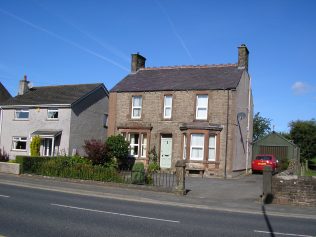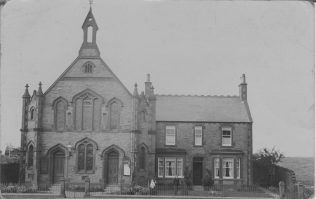Aspatria, Queen Street (adjacent to the railway bridge) PM Chapel (1895), Cumberland
Grid Ref |NY151421




The chapel was built in 1895-6 at a cost of £1273 and opened on 10th September 1896 The front elevation was of Lazonby stone with red stone dressings. The building was designed by WG Scott of Maryport. It was entered through two doorways with a two light window between. Above them was central a three light window flanked by lancet windows. All the openings had ogee arches. There was a bell cote at the top of the gable. The corners of the gable end were chamfered and each of the four angles surmounted by a pinnacle. Inside there was a gallery and an overall capacity of 340 sittings. There was also a schoolroom and two other rooms and the minister‘s house adjoined the chapel. The contracts for building the chapel were let on 16/9/1895:
JJ Wilson of Workington, mason, £499
James Fletcher of Workington joiner, £294.10.0
JS Kellet of Carlisle, slater, £56.10.0
George Nicholson of Wigton, plasterer, £44.15.0
W Strathern of Whitehaven, plumber and gasfitter, £42.2.6
W Strathern of Whitehaven, glazier, £36.15.0
The chapel had been closed by 1980. The chapel was demolished and replaced by a dwelling but the minister’s house remains. (Cumbria Archive Service, Carlisle DFCM9/86/2, DFCM9/187, DFCM9/178; Carlisle Library, 1A287, Methodist Property Statistics 1940, 1980; Bulmer’s Directory of Cumberland, 121; site visit 05.09.2015)
The only image of the which has been found is a printing plate In the Carlisle Archive Centre (DFCM9/178)
In its heyday this must have been a most impressive suite of buildings and is probably Scott‘s most successful ecclesiastical commission. (cf Ellenborugh, Old Road, Primitive and Broughton Moor Wesleyan)





No Comments
Add a comment about this page